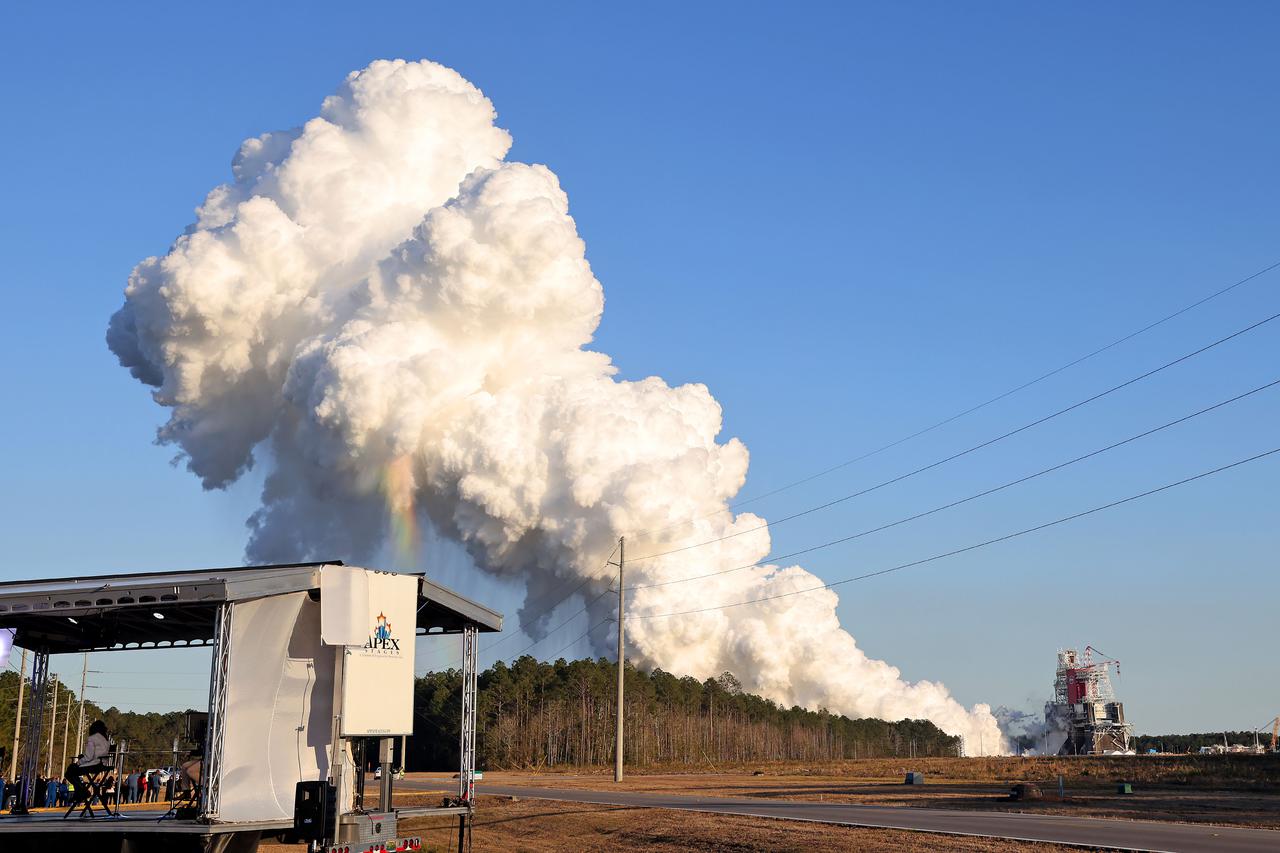NASA Successfully Tests Moon Rocket

NASA successfully tests Space Launch System, a rocket intended to send humans back to the the lunar surface and eventually to Mars
The US space agency, NASA, has successfully tested a rocket intended to ultimately take human passengers to the Moon.
NASA ran the Space Launch System (SLS) “core stage” rockets running for just over eight minutes, the time needed to lift a payload from Earth into space.
The test completes the SLS’ “Green Run” test phase and follows a January test that was shut down prematurely after about one minute.
The core stage consists of four RS-25 engines that are complemented by two outboard solid rocket boosters.

Lunar mission
NASA is planning to use the system to launch the unmanned Artemis I mission to the Moon late next year.
The mission is intended to test the Orion crew vehicle that would take humans to the Moon for the first time since 1972.
The space agency’s plans include a “gateway” space station in orbit around the Moon that would assist in further manned lunar exploration, as well as eventual manned voyages to Mars.
Acting NASA administrator Steve Jurczyk called the SLS an “incredible feat of engineering”.
“Today’s successful hot fire test of the core stage for the SLS is an important milestone in NASA’s goal to return humans to the lunar surface – and beyond,” he said.
The test included moving the four engines in specific patterns to direct thrust and throttling them down and back up, as they would during flight.

Mars rocket
The core stage’s two propellant tanks hold more than 733,000 gallons of supercold liquid hydrogen and liquid oxygen, and use complex flight software and avionics systems that were tested during the “hot fire” run at the B-2 Test Stand.
During the test, which was carried out at the Stennis Space Centre near Bay St. Louis, Mississippi, teams delivered more than 330,000 gallons of water per minute to cool the stand’s flame deflector.
The core stage is primarily built by Boeing, with the RS-25 rockets being built by Aerojet Rocketdyne.
Following the test the core stage is to be refurbished, a process expected to take about a month, then shipped to the Kennedy Space Centre in Florida.
The stage is to be assembled there along with the solid rocket boosters, other parts of the rocket and the Orion spacecraft on the facility’s mobile launcher in preparation for Artemis I.
Earlier this month SpaceX tested its SN10 rocket prototype, which also ultimately has Mars as its intended destination, in a flight over South Texas that ended with the rocket successfully landing upright – and later exploding on the launch pad.

